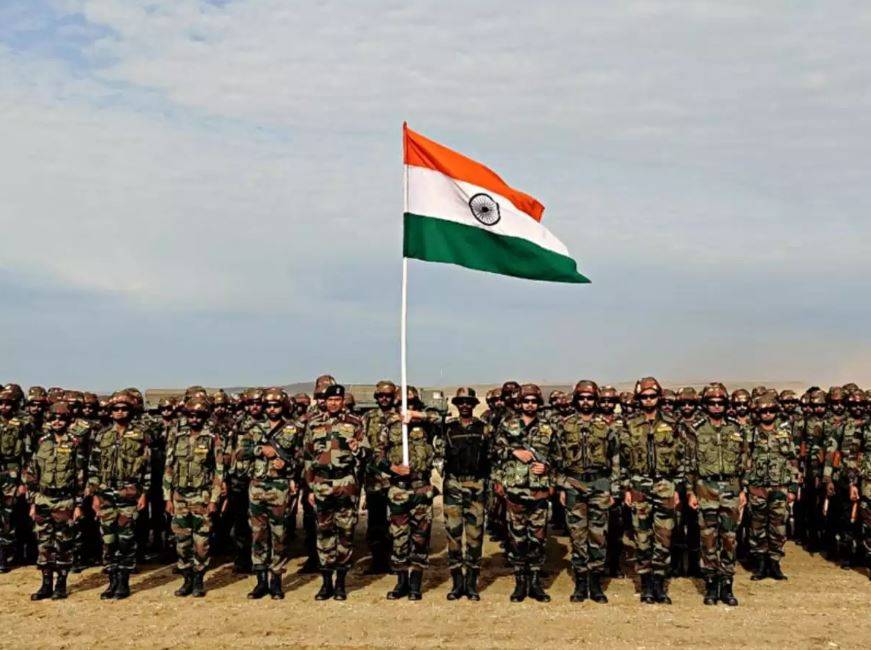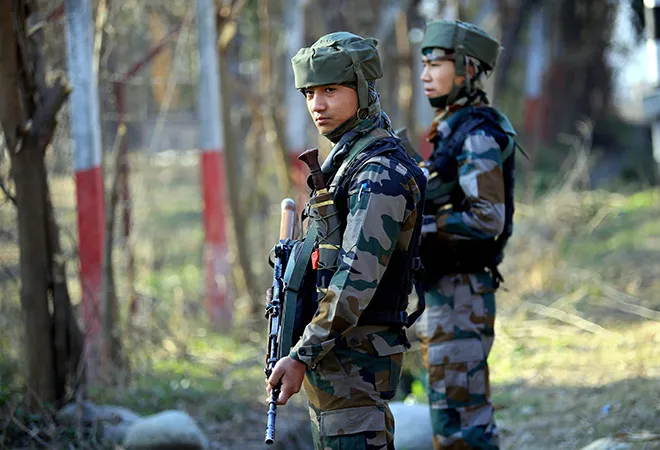Entrepreneur | Posted on
India has the second-largest army in the world, ahead of the USA, only behind China. Over 1.4 million active personnel are deployed, making the force the largest volunteer army. It has more than 3,500 battle tanks and 3,000 infantry fighting vehicles.
Per the Global Firepower ranking, India ranks fourth on the list of the most powerful military.
India has the 4th largest defense budget. In 2018, we spent $58 billion, which made up 2.1 percent of the country’s GDP.
Many other such numbers underline the might of the Indian army.
However, that said, there’s much more to the Indian army than just their large number, weapons, and muscle power.
I believe one of the biggest strengths of the Indian army isn’t just courage but compassion. Army men and women across the world have courage – very, very few of them have the height of compassion that ours have though.

They not only protect us from the enemies outside but are also always there to help whenever needed inside… To help during natural calamities, to handle law and order situations, and to maintain peace. The fact that despite being provoked time and again by the neighbors they stood calm and took well-measured and thoughtful counters is incredible. Remember, during difficult times, it’s easy to lose emotions and get angry – only amazing individuals can maintain their composure and act in balance.
The fact that they look just any other person and yet have so many unique factors that make them so much better than the rest – it’s outstanding.
There are just too many things that make the Indian army so great. Unlike other countries’, they aren’t just a trained bunch ready to handle guns and missiles. They are the trained people with very high emotional intelligence who remain committed to serve the country irrespective of the political and social ecosystem in the country. They are the people who choose not to go on war – but they are also ready to go head-on-head if any war comes on.
People in the military, in India, or anywhere in the world, should be respected highly. It sounds cliche but it’s true – they risk their lives for us. I wish, in India, people genuinely respect and care about our army and not just do “hamare jawan” for the sake of politics. Sadly, most of the people don’t. If they did, the demand to invest in better equipment and better care of our jawans should have been echoing from every corner of the country.
This is another interesting strength of the Indian army. Despite their name being used by political gains, theycontinue to remain apolitical and stay committed to their service towards the country.
0
0 Comment
Blogger | Posted on
I'll attempt to answer this by utilizing the case of the 2008 Mumbai assaults. The NSG originates from the Indian armed forces and is directed by the officials of the exceptional powers.
It looks straightforward from the outside. The city was assaulted by 10 psychological oppressors and circumstances were crazy for the Mumbai police and ATS. So the NSG was brought in. They murdered 8 psychological militants (1 executed and 1 captured by Police/ATS) and liberated the individuals.
Be that as it may, beneath are a portion of the focuses to be noted:
For 14 hours, the NSG was kept ready and waiting. To clarify the trouble level of this basic explanation to IT folks like me: Let us guess you need to give an introduction at 9 AM. You arrive at the corridor and you're let know need to introduce 10 minutes later.. on the other hand, postponed by 15 minutes. at that point postponed by 10 minutes again, etc.. Your turn comes at 11 PM. (9 AM to 11 PM.) You can't leave since no one can tell when you'll be brought in to introduce. (Simply envision how your introduction goes Failed.)
At the point when they left Delhi, there was one specific individual who was driving. A large portion of the soldiers didn't have any acquaintance with one another as they continued pivoting and evolving units.
After arriving in Mumbai, they were partitioned into three gatherings, so they have another group head now.

At the point when they were brought in, they didn't have a guide/blueprint of any of the areas. It was there with BMC yet not accessible close by. so they cannot design from where to enter, where do we have rooms, where is the flight of stairs and so on and so on.
Every one of the lodgings could have A. Fear-based oppressors B. Regular citizens C. Regular citizens caught by Terrorists. Consequently, they can't utilize projectiles. More than 1000 such rooms must be cleared (individually) physically.
Since the Taj is ocean confronting, there was no structure inverse to the inn to give any cover fire or for the NSG to move at specific tallness and plan an attack and so on.
When they clear a story and move to the following one, they need to leave at any rate to 2 men on that floor to deal with fear-based oppressors, on the off chance that they descend. (So as they are moving toward the highest floors, the quantity of men we have is diminishing).
0
0 Comment

